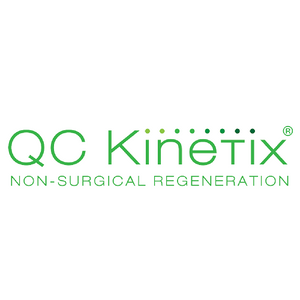Understanding Joint Pain and Treatment Options
Joint pain is a common condition that affects millions of people worldwide, often resulting from arthritis, injury, or overuse. Arthritis symptoms, such as pain, swelling, and stiffness, can significantly impact joint pain and overall joint health.
It can significantly impact mobility, flexibility, and overall quality of life. Common conditions such as osteoarthritis (OA), rheumatoid arthritis (RA), and gout contribute to chronic joint pain and stiffness.
Finding the right treatment plan is essential for reducing inflammation, alleviating discomfort, and improving joint function. Effective relief often involves a combination of medications, lifestyle adjustments, supplements, and alternative therapies.
Medications for Joint Pain Relief
There are a number of different options when it comes to joint pain relief.
1. Nonsteroidal Anti-Inflammatory Drugs (NSAIDs)
NSAIDs are among the most commonly used over-the-counter and prescription medications for OA pain, effectively reducing inflammation and alleviating discomfort.
-
Ibuprofen (Advil, Motrin) – Effective for reducing swelling, stiffness, and pain.
-
Naproxen (Aleve) – Provides longer-lasting pain relief compared to ibuprofen.
-
Celecoxib (Celebrex) – A COX-2 inhibitor that targets inflammation with fewer gastrointestinal side effects.
2. Acetaminophen (Tylenol)
-
Helps relieve mild to moderate joint pain, especially for osteoarthritis.
-
Unlike NSAIDs, it does not reduce inflammation, but it is gentler on the stomach.
3. Prescription Medications
For individuals with severe arthritis pain, doctors may recommend stronger prescription medications:
-
Corticosteroids (Prednisone, Cortisone Injections) – Particularly recommended for those experiencing severe pain who may not respond to other pain medications, as they provide powerful inflammation reduction but may have long-term side effects.
-
Biologic Drugs (Humira, Enbrel) – Used for autoimmune-related joint pain (e.g., RA) by blocking inflammatory responses.
4. Topical Creams and Gels
For localized pain relief, topical treatments provide direct action on painful joints:
-
Capsaicin Cream – Derived from chili peppers, it helps reduce pain signals to the brain.
-
Diclofenac Gel (Voltaren) – A topical NSAID that relieves osteoarthritis-related pain.
-
Menthol-based gels (Biofreeze) – Provide a cooling effect that soothes aching joints.
Alternative Approaches to Relieving Pain
While medications provide quick pain relief, alternative approaches focus on relieving pain through long-term joint health and mobility improvement:
1. QC Kinetix Joint & Bone Health QuickStart Program
For a comprehensive, natural approach to joint pain relief, the QC Kinetix Joint & Bone Health QuickStart Program offers a scientifically formulated blend of essential nutrients to support joint health, reduce inflammation, and promote mobility. This supplement includes:
-
Vitamin D – Crucial for bone health and calcium absorption to prevent joint deterioration.
-
Turmeric (Curcumin) – A potent anti-inflammatory that helps reduce arthritis-related swelling.
-
Collagen Type II – Provides structural support to cartilage and helps improve joint flexibility.
-
Boswellia Serrata – A natural extract known to reduce joint inflammation and stiffness.
-
Boron – Supports bone and joint function, particularly beneficial for those with arthritis or chronic joint pain.
This high-quality supplement is an effective, long-term alternative to traditional medications without the side effects associated with NSAIDs or corticosteroids.
2. Physical Therapy
-
Helps improve flexibility and strength around painful joints with the guidance of a physical therapist.
-
Reduces stiffness, enhances mobility, and prevents further damage.
3. Acupuncture and Massage Therapy
-
Acupuncture stimulates pressure points to relieve pain naturally.
-
Massage therapy helps reduce muscle tension and improves circulation around joints.
4. Dietary Changes for Joint Health
-
Increase Omega-3 Fatty Acids (found in fish oil) to reduce joint inflammation.
-
Antioxidant-rich foods like berries, leafy greens, and nuts can help combat inflammation.
-
Limit processed foods, sugars, and excess red meat, which contribute to joint stiffness and discomfort.
Managing Arthritis Pain
For individuals with arthritis-related joint pain, a combination of medications, lifestyle modifications, and natural therapies can help improve symptoms and mobility. It is important to consider various treatment options for arthritis pain relief, including both medication and non-drug approaches.
-
Weight Loss – Reducing body weight decreases stress on weight-bearing joints such as the knees and hips.
-
Regular Exercise – Low-impact activities like swimming, cycling, or yoga can improve joint function.
-
Assistive Devices – Using braces, canes, or orthopedic inserts can alleviate joint pressure.
Injected Medications for Joint Pain
For moderate to severe joint pain, some individuals may require joint injections to relieve joint pain:
1. Corticosteroid Injections
-
Provide fast-acting pain relief to treat arthritis pain by reducing joint inflammation.
-
Typically used for knee osteoarthritis and rheumatoid arthritis.
2. Hyaluronic Acid Injections
-
Replenishes joint lubrication, making movement smoother.
-
Best suited for osteoarthritis-related knee pain.
3. Platelet-Rich Plasma (PRP) Injections
-
Uses the body’s natural healing process to repair damaged joint tissue.
-
Helps promote long-term joint recovery.
For those who do not respond to other treatments, joint replacement surgery is a viable option, involving the removal of damaged joint parts and the implantation of artificial joints.
Mind-Body Therapies for Pain Relief
Managing chronic pain involves more than physical treatments—mental and emotional well-being also play a role in helping to relieve arthritis pain through mind-body therapies.
-
Cognitive Behavioral Therapy (CBT) – Helps patients reframe their pain perception.
-
Meditation & Yoga – Reduce stress and improve flexibility.
-
Deep Breathing Techniques – Help manage pain perception and relaxation.
Lifestyle Changes for Joint Health
Making simple adjustments to daily habits can significantly reduce joint pain and improve quality of life.
-
Stay Active – Engage in low-impact exercises to maintain joint mobility.
-
Eat an Anti-Inflammatory Diet – Incorporate fruits, vegetables, and omega-3s into meals.
-
Prioritize Hydration – Water helps lubricate joints and improve mobility.
-
Reduce Alcohol & Tobacco Use – Both contribute to joint inflammation and pain.
Risks and Benefits of Joint Pain Medications
While medications offer pain relief, they come with potential risks:
-
NSAIDs – May cause stomach ulcers, kidney issues, and heart risks with prolonged use.
-
Corticosteroids – Can lead to weight gain, mood changes, and weakened immune function.
-
Biologic Drugs – Increase infection risk and allergic reactions.
Discussing the risks and benefits with a healthcare professional ensures the safest, most effective treatment plan.
When to Seek Medical Attention for Joint Pain
Contact a Doctor if You Experience:
-
Severe joint pain interfering with daily activities.
-
Sudden or persistent swelling, redness, or warmth in the joint.
-
Joint pain accompanied by fever or unexplained symptoms.
-
Inability to move or bear weight on the affected joint.
Frequently Asked Questions
1. What is the best medicine for joint pain?
NSAIDs, corticosteroids, and natural supplements like the QC Kinetix Joint & Bone Health QuickStart Program offer effective joint pain relief.
2. What is the best painkiller for arthritis?
Prescription-strength NSAIDs, biologics, and steroid injections provide relief for severe arthritis pain.
3. What is the first-line medication for joint pain?
Over-the-counter NSAIDs like ibuprofen or acetaminophen are typically the first treatment option.
4. Which product is best for joint pain?
A combination of supplements, such as QC Kinetix Joint & Bone Health, and prescribed medications tailored to the condition work best.
Top Medicine for Pain in Joints: Effective Relief Options to Consider Conclusion
Finding the best treatment for joint pain depends on the cause, severity, and individual health needs. A combination of medications, alternative therapies, and lifestyle changes can provide long-term relief.
Always consult with a healthcare provider before starting any new treatment plan.





